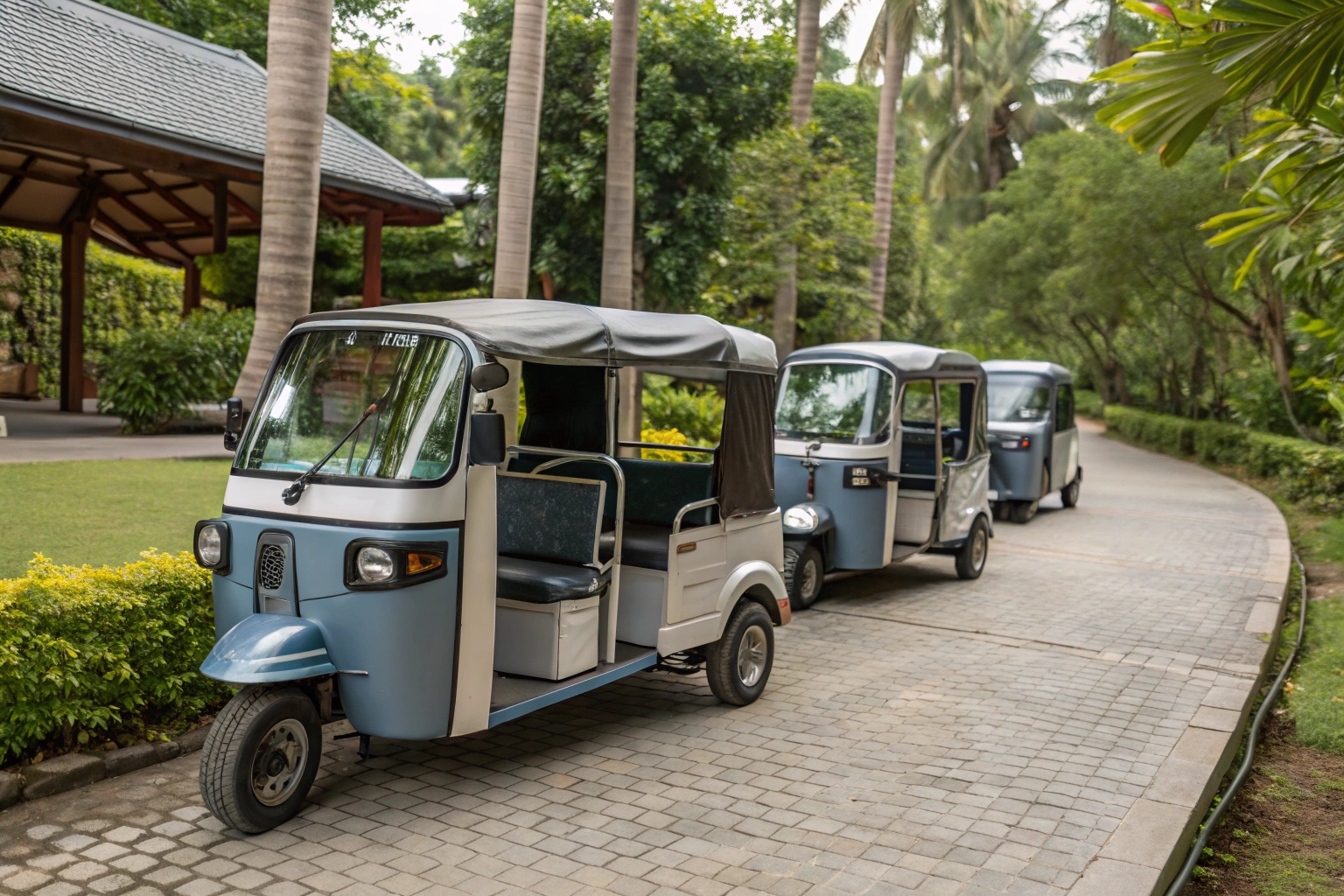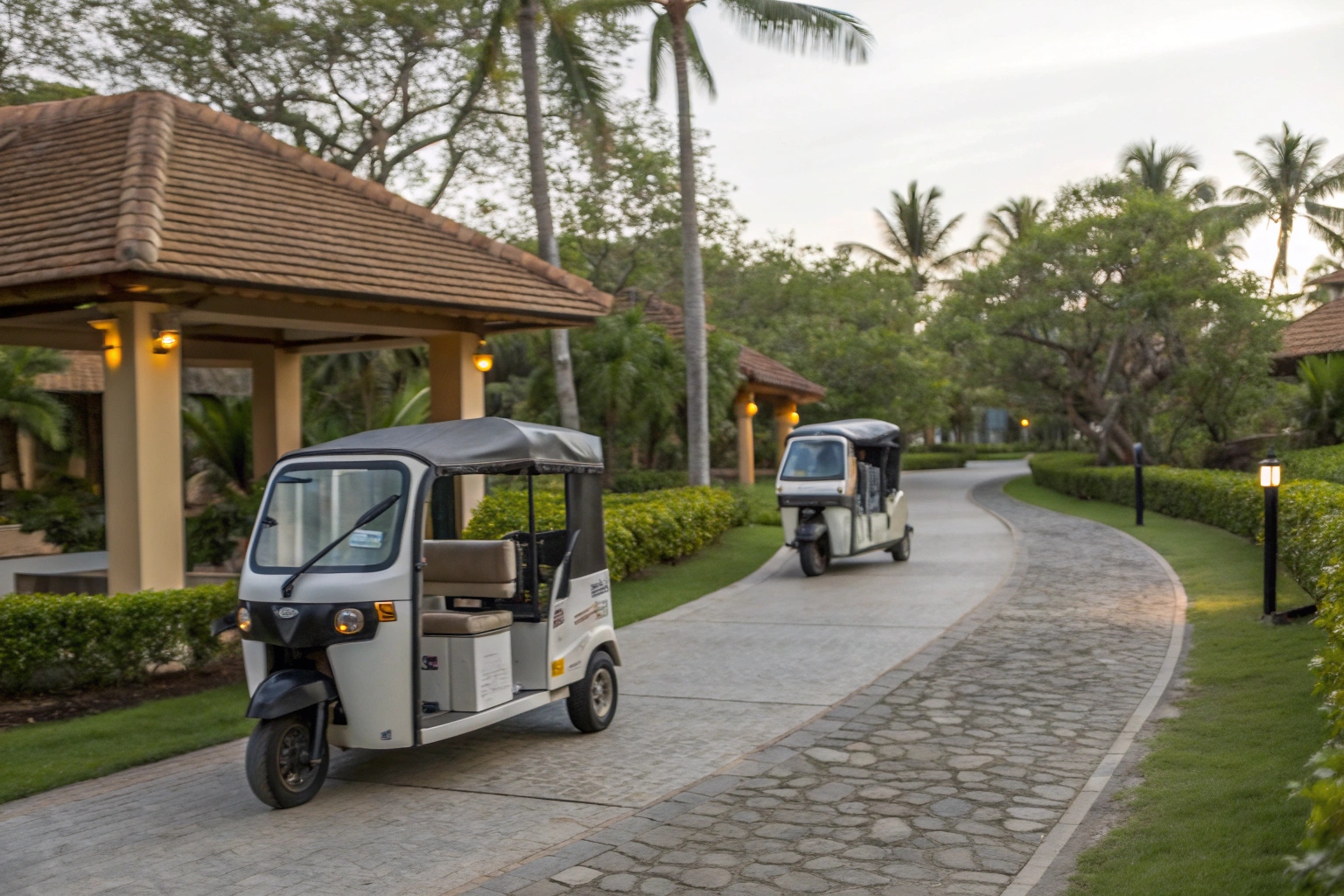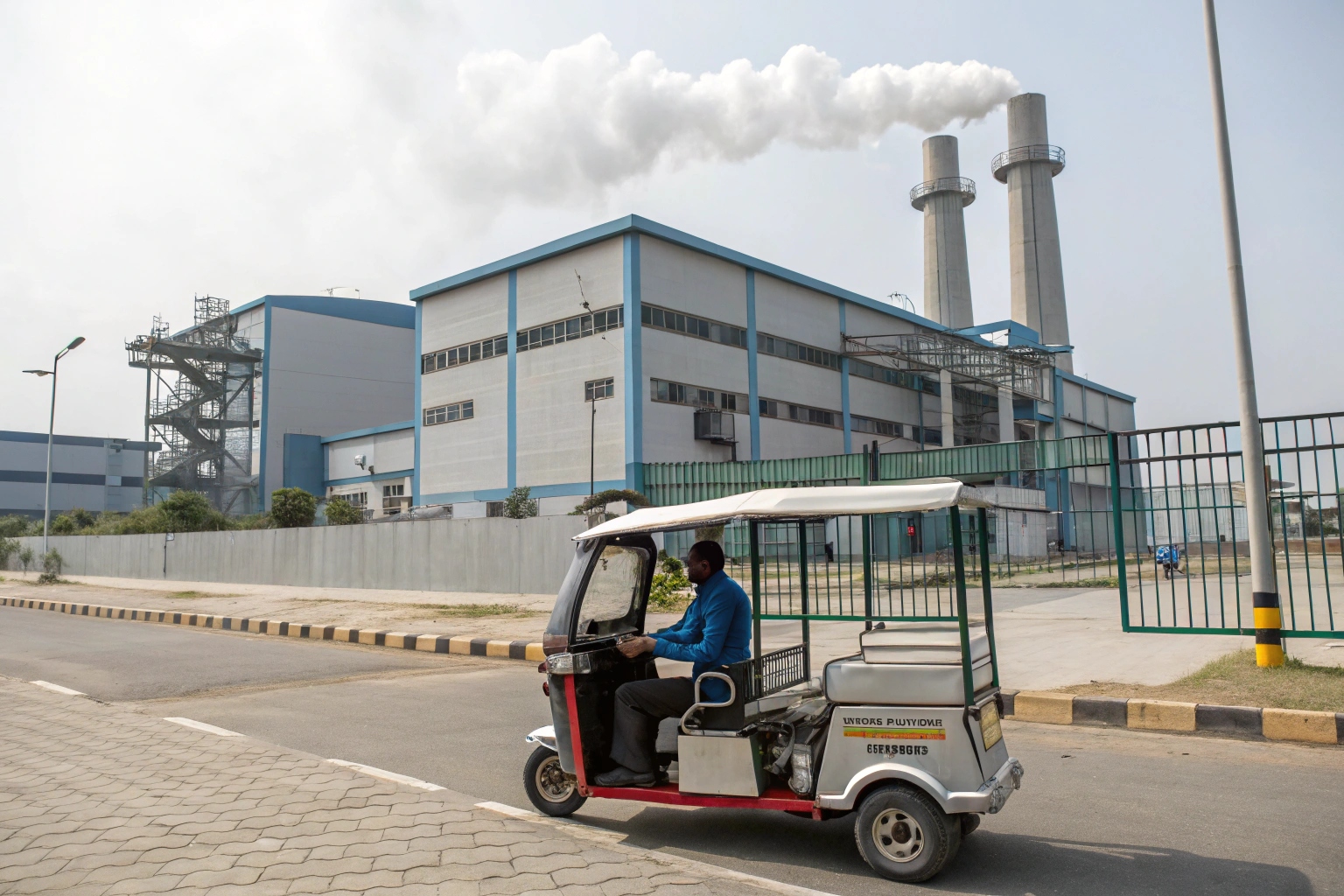Your internal shuttle is noisy, polluting, and expensive to run. This hurts your budget and your brand image. Electric tuk-taxis offer a quiet, clean, and cost-effective solution for you.
Bajaj-style e-tuk taxis are an excellent choice for internal shuttles because they drastically cut operating costs, run quietly with zero emissions, and have a compact design ideal for private roads. They are perfect for resorts, campuses, and industrial parks, improving both efficiency and guest experience.

Many of my clients run large facilities like resorts, universities, or industrial parks. They all face the same challenge: moving people around efficiently without breaking the bank or ruining the atmosphere. The traditional diesel minibus is often too big, too loud, and too costly. This is where I've seen our Bajaj-style e-tuk taxis become a game-changer for them. They solve these core problems in a very practical way. But how exactly do these benefits play out in the real world? Let’s dive deeper into the specific advantages you can expect.
How Do Bajaj Style E-Tuk Taxis Lower Shuttle Operating Costs?
Fuel and maintenance for traditional shuttles are eating away at your budget. These unpredictable costs keep rising, making financial planning a constant headache. E-tuk taxis slash these expenses completely.
Electric tuk-taxis lower operating costs primarily through cheaper electricity compared to diesel or gasoline. They also have far fewer moving parts, which means minimal maintenance and fewer repairs, resulting in a significantly lower total cost of ownership over the vehicle's lifespan.

When I talk to clients, the first thing we usually discuss is the bottom line. The savings from switching to electric are immediate and substantial. The biggest factor is the fuel-to-electricity cost difference. Charging a fleet of e-tuk taxis overnight costs a fraction of what it takes to refuel a diesel van every day. I had a client managing a large coastal resort in Thailand who replaced two old diesel vans with six of our e-tuk taxis. He told me his monthly transport budget dropped by nearly 70%.
But the savings go beyond just fuel. Think about maintenance. A traditional engine has hundreds of moving parts: pistons, belts, spark plugs, filters, and complex exhaust systems. All of these require regular service and eventually break. An electric motor has very few moving parts. There are no oil changes, no filter replacements, and no exhaust pipes to fix. This means less downtime for the vehicle and lower bills from the mechanic.
Here is a simple breakdown:
| Kadahilanan ng gastos | Diesel Shuttle | Electric Tuk-tuk |
|---|---|---|
| Fuel | Mataas & Pabagu -bago ng isip | Mababa & Stable |
| Pagpapanatili | Frequent & Costly | Minimal & Simple |
| Replacement Parts | Oil, Filters, Belts | Brake Pads, Tires |
| Uptime | Mas mababa | Mas mataas |
This simple math shows why the total cost of ownership is so much lower. The initial investment is quickly paid back by the daily operational savings.
Why Are Bajaj Style E-Tuk Taxis More Suitable for Closed-Area Mobility?
Your large shuttle buses can't access narrow pathways or quiet zones. This forces people to walk long distances and limits the effectiveness of your internal transport. The compact e-tuk taxi easily solves this.
Their small size and tight turning radius allow them to navigate narrow paths in resorts, industrial parks, and campuses where larger vehicles cannot go. Their quiet, zero-emission operation makes them ideal for noise-sensitive areas like hospitals or residential communities.

The "one-size-fits-all" approach rarely works for internal transport. I remember a potential client from a university in Malaysia. They had beautiful, landscaped pathways connecting different faculties, but they were too narrow for their standard shuttle bus. Students had to walk long distances in the heat. Our e-tuk taxis were the perfect fit. Their compact body can easily handle paths that are only meant for pedestrians or golf carts. This opens up entirely new routes and makes the entire facility more accessible.
This advantage is crucial in many environments:
- Resorts & Hotels: Moving guests from the lobby to beachfront villas through scenic garden paths.
- Industrial Parks & Factories: Transporting workers from a central parking lot directly to their building entrance, even through crowded service lanes.
- Hospitals: Shuttling patients and visitors between buildings quietly and without producing harmful fumes.
- Farms & Wineries: Giving tours on unpaved tracks where a large bus would be impractical.
Furthermore, these vehicles are classified as low-speed vehicles (LSVs) in many countries. When used on private property, this often simplifies or eliminates the need for road registration and licensing, making deployment much faster and cheaper. Their quiet operation is not just a luxury; it’s a necessity in places like retirement communities or hospital grounds where peace and quiet are paramount.
What Passenger Experience Benefits Do Bajaj Style E-Tuk Taxis Offer?
Standard shuttle buses are often noisy, smelly, and impersonal. This creates a poor first impression for your guests, clients, or staff and feels more like a chore than a service.
E-tuk taxis provide a quiet, smooth ride without any exhaust fumes. The open-air design offers an enjoyable, personal journey, enhancing the brand image of a resort, tourist site, or modern corporate campus by making transportation part of the experience.

The passenger experience is about more than just getting from point A to point B. It's about how people feel during the journey. The difference between riding in a rumbling diesel van and a silent e-tuk taxi is huge. In an e-tuk taxi, passengers can have a conversation without shouting over an engine. There are no diesel fumes, just fresh air. This is especially important in scenic locations like an eco-park or a coastal resort. The ride itself becomes a pleasant and memorable part of their visit.
From our factory, we ship these vehicles all over the world, and we've seen how clients use them to elevate their brand. For example, a luxury hotel chain in the UAE ordered a fleet from us in their signature brand color, with their logo neatly embroidered on the seats. These e-tuk taxis became an iconic feature of the resort, constantly appearing in guests' social media photos. The vehicles weren't just transport; they became a powerful marketing tool.
The design also offers practical benefits. The open sides provide unobstructed views, perfect for sightseeing tours within a property. The low floor makes it easy for passengers of all ages, including the elderly, to get in and out. It feels less like a public bus and more like a personal chauffeur service, creating a premium feel that reflects well on your organization.
How Can Bajaj Passenger E-Rickshaw Support Sustainability Goals?
Your company talks about being green, but your old diesel vehicles tell a different story. Stakeholders and customers need to see real, tangible actions, not just words on a website.
By running on electricity, Passenger E-Rickshaw produce zero tailpipe emissions. This directly cuts your facility’s carbon footprint and air pollution. They are a powerful, visible symbol of your genuine commitment to sustainability and corporate social responsibility.

For any business today, sustainability is no longer optional. It is a core part of corporate identity that customers, investors, and employees care about. Switching your internal fleet to electric is one of the most visible and impactful steps you can take. Every time a quiet, clean e-tuk taxi drives past, it sends a strong message: "We care about the environment." This simple action helps meet Environmental, Social, and Governance (ESG) targets and can be a highlight in any sustainability report.
The benefits are concrete. Zero tailpipe emissions mean no CO2, no nitrogen oxides, and no black soot polluting the air your guests and staff breathe. This is especially critical for hospitals, schools, and resorts. I worked on a government project in the Philippines to help a protected tourist island transition to green transport. They replaced all their noisy, polluting gas tricycles with our e-tuk taxis. This move was a key factor in them winning a major eco-tourism award and attracting more environmentally conscious tourists.
To take it a step further, these vehicles can be powered by renewable energy. We have clients who have installed solar panel carports to charge their fleets. This creates a completely self-sufficient and carbon-neutral transport system. By choosing modern lithium batteries, you also get a longer lifespan and better efficiency, further reducing the overall environmental impact.
Pangwakas na Salita
Choosing Bajaj-style e-tuk taxis is a smart business decision. They lower costs, navigate closed areas easily, improve the passenger experience, and clearly demonstrate your commitment to a sustainable future.

